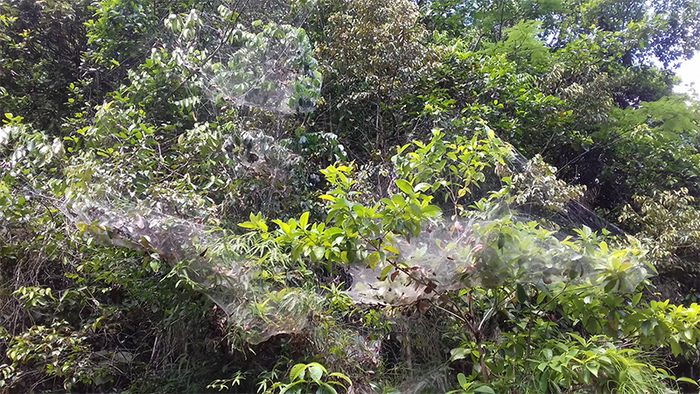Scientists decode how some spiders team up to hunt in packs of hundreds
Findings may inspire design of artificial systems such as robot swarms that require fast and flexible synchronisation between various components

Your support helps us to tell the story
From reproductive rights to climate change to Big Tech, The Independent is on the ground when the story is developing. Whether it's investigating the financials of Elon Musk's pro-Trump PAC or producing our latest documentary, 'The A Word', which shines a light on the American women fighting for reproductive rights, we know how important it is to parse out the facts from the messaging.
At such a critical moment in US history, we need reporters on the ground. Your donation allows us to keep sending journalists to speak to both sides of the story.
The Independent is trusted by Americans across the entire political spectrum. And unlike many other quality news outlets, we choose not to lock Americans out of our reporting and analysis with paywalls. We believe quality journalism should be available to everyone, paid for by those who can afford it.
Your support makes all the difference.A spider species that lives in French Guiana is able to hunt in packs of hundreds, moving “in unison” and coordinating their attacks on prey, according to a new study.
A team of French researchers said the findings could inspire the design of artificial systems such as robot swarms that require fast and flexible synchronisation between their components.
While most spiders live solitary lives, about 20 of the nearly 50,000 known species of the arachnids have developed a permanent social life characterised by a remarkable cooperation, according to the study published on Monday in the journal PNAS by a team including those from Université de Toulouse, CNRS France.
Scientists assessed the lives of Anelosimus eximius spiders of French Guiana, whose colonies can house several thousand individuals of all ages, coexisting peacefully in gigantic webs that often reach several cubic metres.
When prey falls into their web, these spiders instantly adopt synchronising behaviour carrying out their attack “in unison” by coordinating phases of moving and stopping. By following this swarm behaviour, the spiders are able to capture prey up to several hundred times their size, researchers said.
Combining fieldwork and modelling, the scientists identified the subtle actions involved in the synchronisation of these movements by the spiders.
The spiders move in on their prey in two stages depending on vibrations on the web: in one, they close in on their struggling victim in unison, and in the other, they stand still.
This kind of synchronisation, researchers said, allows the arachnids to time their approach, ensuring that all of them strike at the same time.
While synchronising, each spider’s behaviour is modulated according to the relative intensity of the prey’s signals compared to those of the other spiders, the study found. There is also no leadership role among these spiders, and their collective behaviour emerges from the arachnids’ self-organisation.
They remain motionless on the web just so long as the vibrations emitted by their fellow spiders masked those of the prey.
“When the prey falls in the web, this triggers the movement of the spiders. But after a while, they all stop for a few milliseconds before they start moving again,” study co-author Raphaël Jeanson told Live Science.
By coordinating in this manner, they say the spiders increase their ability to detect prey and optimise their hunting performance.
“It’s a bit like when you are in a room with people chatting,” Jeanson said.
As every step on the web taken by the spiders makes noise, the arachnids stop moving to listen for the prey and ensure that they are heading in the right direction.
“We showed that an individual’s decision to move depends on the relative intensity of vibrations emitted by the prey and the moving spiders. This rule allows the group to adapt quickly to any change in prey size or the number of spiders involved in the hunt,” the researchers wrote.
Join our commenting forum
Join thought-provoking conversations, follow other Independent readers and see their replies
Comments